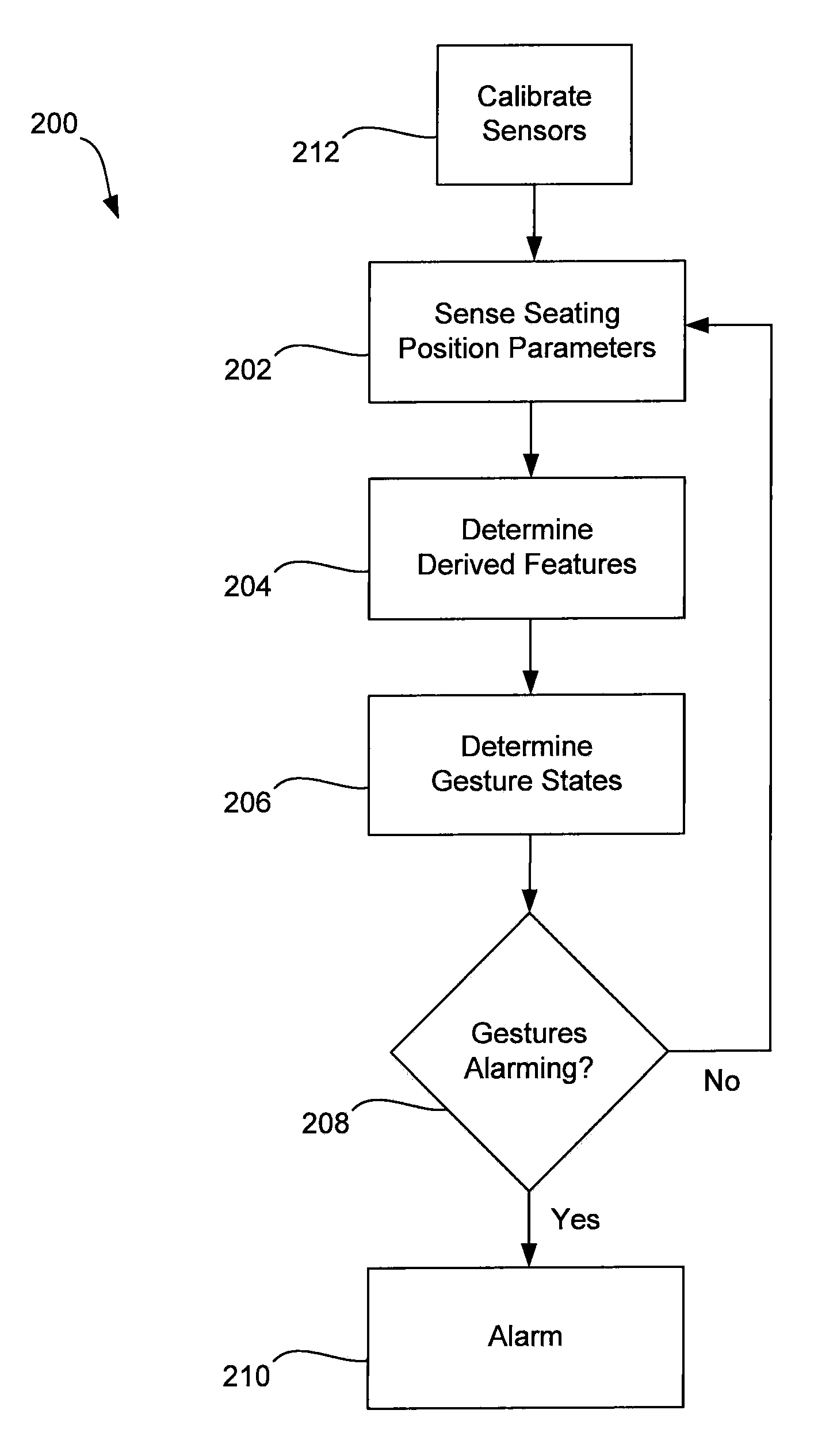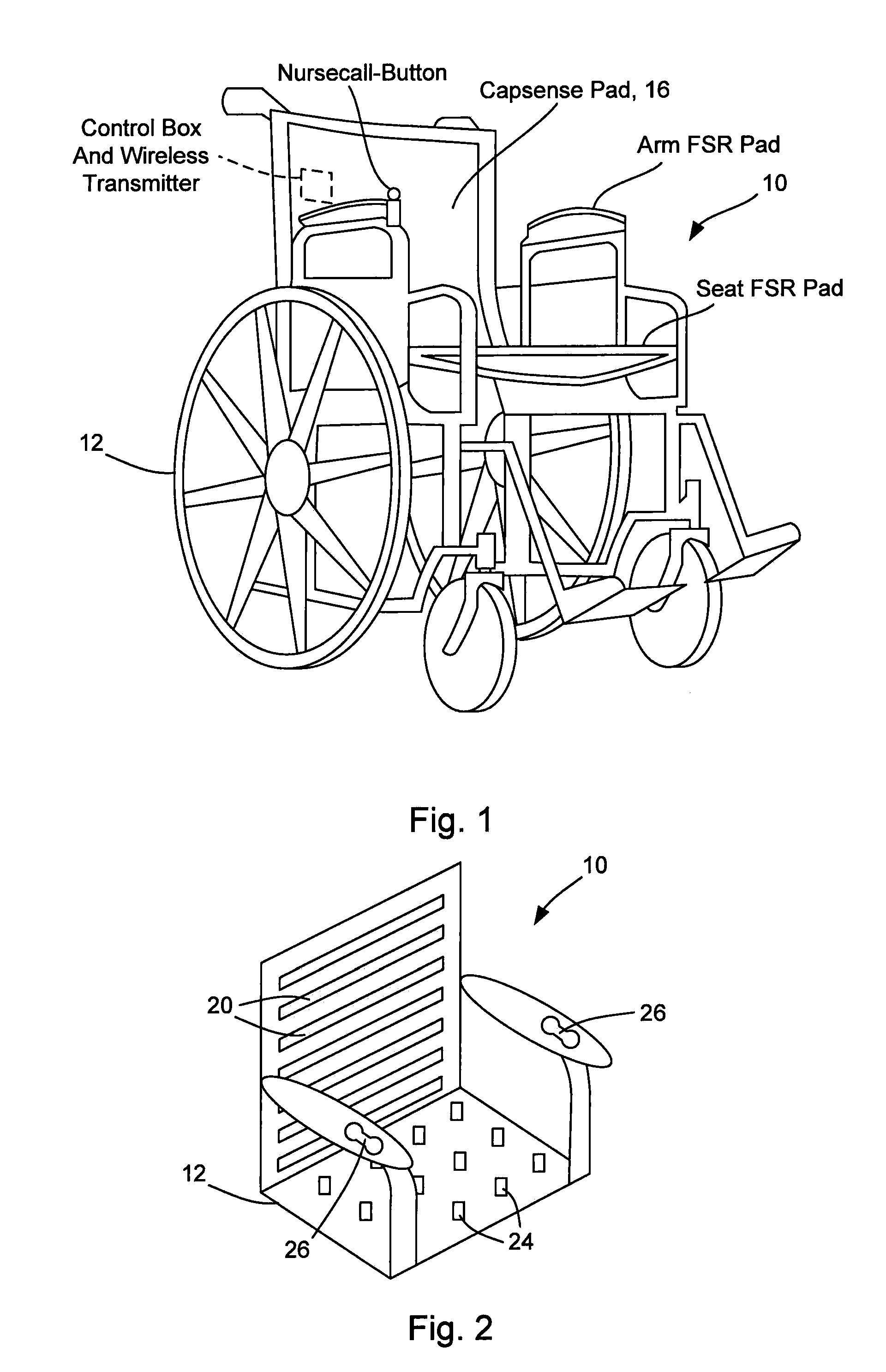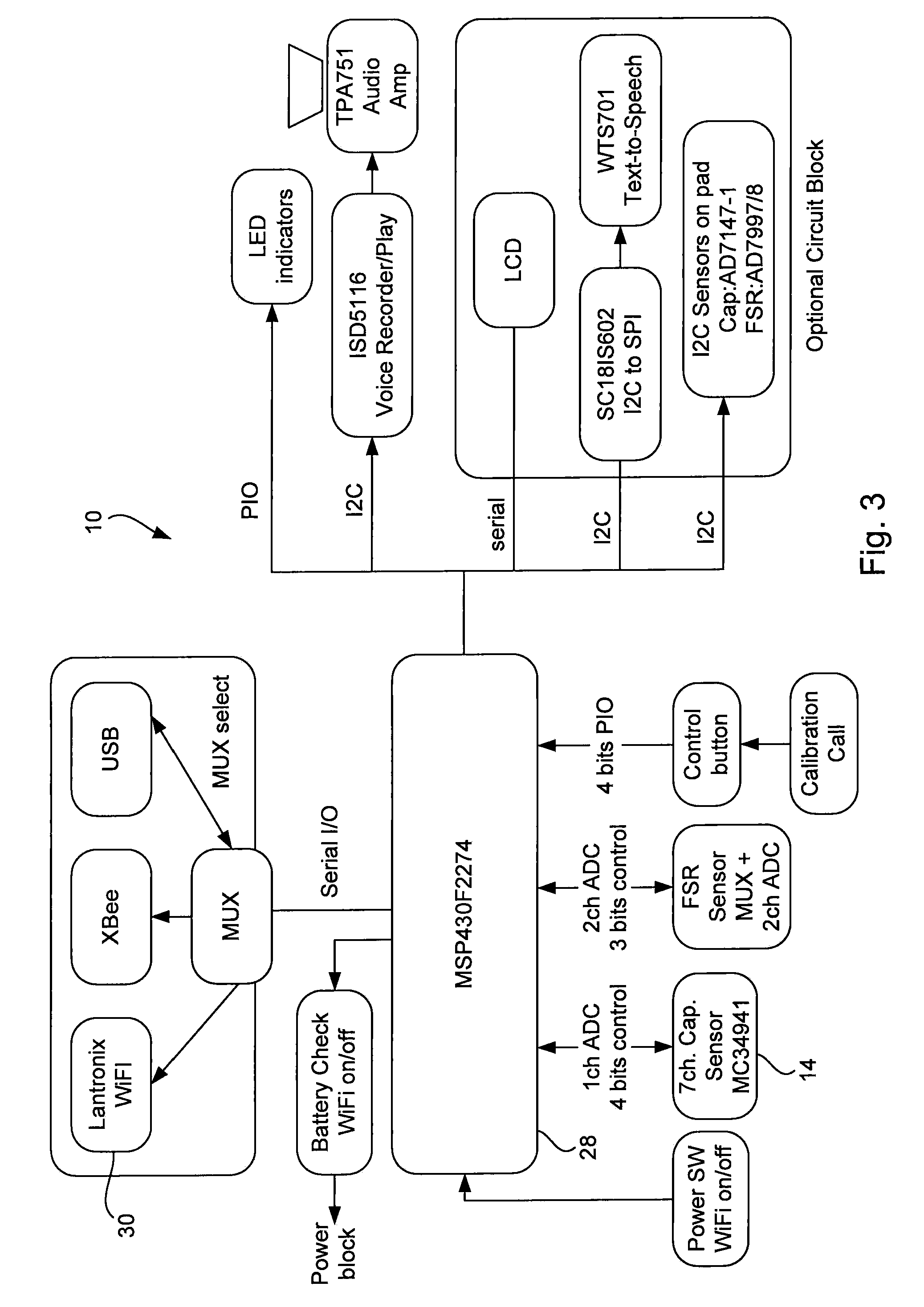Wheelchair Alarm System and Method
a technology for alarm systems and wheelchairs, applied in the direction of signalling systems, electric signalling details, instruments, etc., can solve the problems of falling prevention technology, the potential impact of falling injuries on patients in their homes, and the increase of hospital mortality rate. , to achieve the effect of preventing patient falls and preventing patient falls
- Summary
- Abstract
- Description
- Claims
- Application Information
AI Technical Summary
Benefits of technology
Problems solved by technology
Method used
Image
Examples
Embodiment Construction
[0032]Referring now to FIGS. 1-4, a chair alarm system 10 is installed on a wheelchair 12. Chair alarm system is configured to prevent a patient from falling out of wheelchair 12, as will be discussed in greater detail below. Chair alarm system 10 includes a capacitive sensing unit 14 including a capacitive sensing chip (not shown), a capsense pad 16 installed in the back of chair 12, and a grounding pad 18 installed in the seat of chair 12. Capsense pad 16 includes seven electrodes 20 comprising horizontal strips of conducting tape that extend across the back of chair 12. Each of electrodes 20 is electrically connected to capacitive sensing chip 16, which is also connected to grounding pad 18. Hence, electrodes 20 and grounding pad 18 form seven capacitive sensors. Capacitive sensing unit 14 senses the user's movement in the region between back and seat of chair 12, in particular the distance between the user's body and each individual electrode 20, and will produce an output signa...
PUM
 Login to View More
Login to View More Abstract
Description
Claims
Application Information
 Login to View More
Login to View More - R&D
- Intellectual Property
- Life Sciences
- Materials
- Tech Scout
- Unparalleled Data Quality
- Higher Quality Content
- 60% Fewer Hallucinations
Browse by: Latest US Patents, China's latest patents, Technical Efficacy Thesaurus, Application Domain, Technology Topic, Popular Technical Reports.
© 2025 PatSnap. All rights reserved.Legal|Privacy policy|Modern Slavery Act Transparency Statement|Sitemap|About US| Contact US: help@patsnap.com



